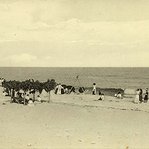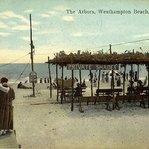The Westhampton Beach Historical Society sent us these great old pictures in and around Westhampton Beach from back in the day. A few fun facts:
- Alexander Winfield Eager, known locally as Buffalo Bill of the East, was Westhampton Beach’s first mounted policeman
- A telegraph office was opened in Westhampton Beach in 1895
- Early in the 20th century, Eastport became known internationally for its ducks with restaurants serving the famous “Long Island Duckling”
All photos provided by the Westhampton Beach Historical Society. For more information on Westhampton Beach history check out their website.

Courtesy of the Westhampton Beach Historical Society
Demarest Rogers sold Rogers Beach Club on Dune Road in Westhampton Beach in 1949 and opened the Liars Club, a local bait and boat rental shop. Rogers was such an ardent fisherman that when he and his fiancée Ethel set their wedding date, they informed the preacher they’d be in on that day… if the codfish weren’t running. Rogers is shown here with Rex Murphey Jr. and Joy Dix.
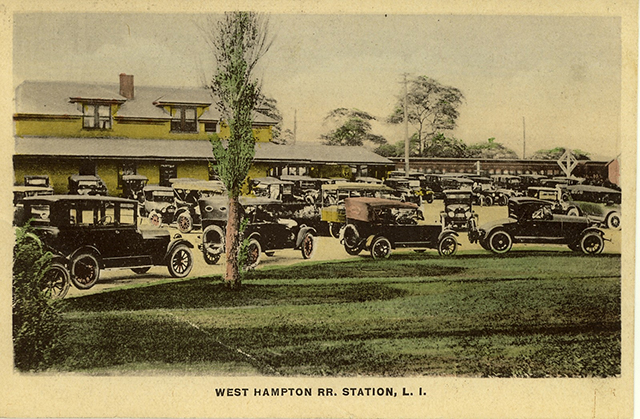
Courtesy of the Westhampton Beach Historical Society
Friday afternoons at the Westhampton train depot in the 1920s looked much as they do today, as those spending the summer in Westhampton flocked to the station at 5:45 pm to meet weekend visitors arriving on the “Cannonball” non-stop service to the Hamptons out of New York City. In 1923, railroad brochures promised “joy in store for all who tour the Sunrise Trail” of eastern Long Island.
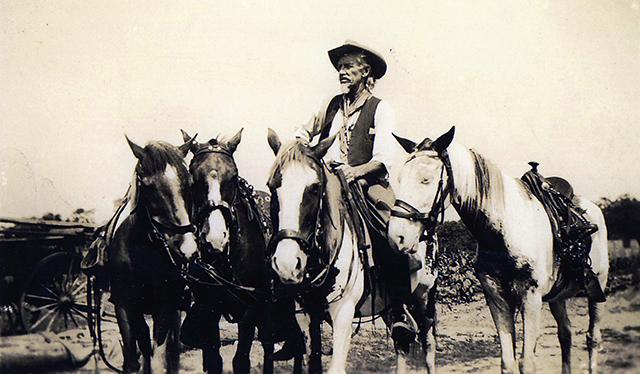
Courtesy of the Westhampton Beach Historical Society
Alexander Winfield Eager (1878-1956), known locally as Buffalo Bill of the East, was Westhampton Beach’s first mounted policeman. With cowboy hat and long flowing hair, mustache, and beard, it is said he carried a sidearm until it was taken away after one too many shoot-in-the-air charges down Main Street. Eager remained Westhampton’s one-man force for any years until eventually replaced by the modern police department.

Courtesy of the Westhampton Beach Historical Society
After the devastating 1938 hurricane, the federal government’s Works Progress Administration (WPA) sent 900 men from New York City to assist Westhampton locals with recovery efforts. Seen here are some of those workers helping to close one of many new inlets created during the storm.
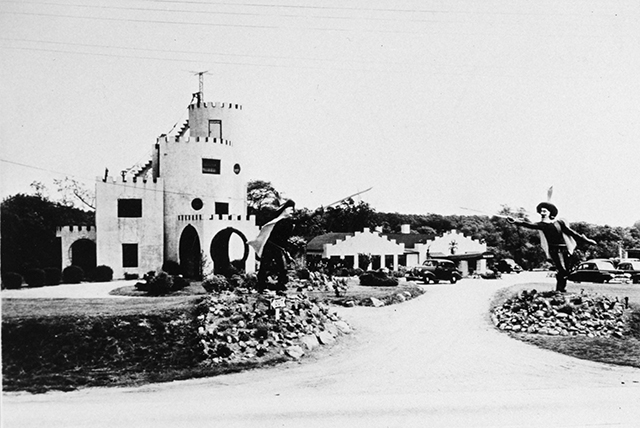
Courtesy of the Westhampton Beach Historical Society
Located at 59 Montauk Highway in Westhampton, the Brouwer Castle was built by eccentric artist Theophilus Brouwer in 1906 to serve as a pottery studio. He adorned the land surrounding the castle with fantastic statuary, including two giant musketeers. After the site was purchased by New York restaurateur M. Louis Basso in 1928, the building next to the castle became an Italian restaurant and continues to entertain diners to this day.
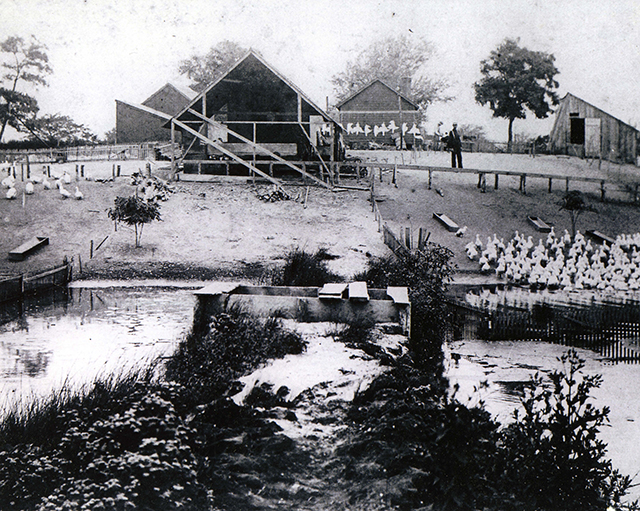
Courtesy of the Westhampton Beach Historical Society
In the late 1880s, a few farmers in Eastport began raising Pekin ducks commercially on local streams and uplands. By 1900, William H. Pye was producing 36,000 ducks annually as the largest duck grower in the area. By 1915, Eastport was known as the center of the thriving duck industry on Long Island and restaurants throughout the world were serving “Long Island Duckling.”
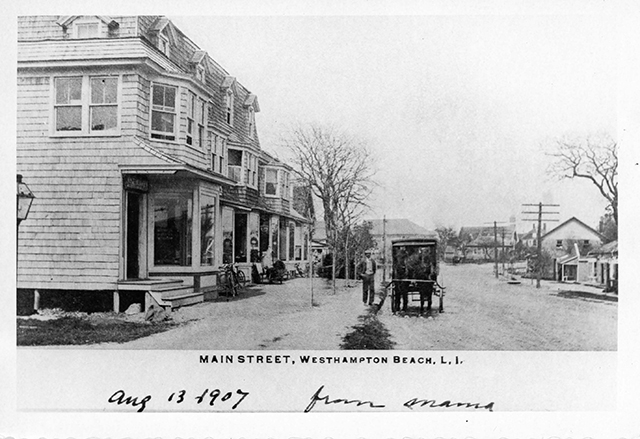
Courtesy of the Westhampton Beach Historical Society
By 1905, the center of Westhampton’s commercial life had moved from Beaver Dam to Main Street in the Village of Westhampton Beach. With a population of over 400 residents, a telegraph office was opened there in 1895 and the following year the Ladies’ Village Improvement Society successfully lobbied for the installation of gas lights along Main Street.

Courtesy of the Westhampton Beach Historical Society
Usually known for hosting golf tournaments, this photo shows the rare instance of a baseball game being played on the grounds of the Westhampton Country Club—located at that time on the west side of Beach Lane in Westhampton Beach. Judge Henry R. Beekman’s windmill, which still stands today, can be seen in the background.
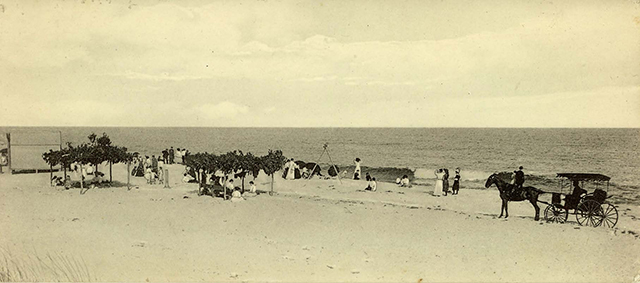
Courtesy of the Westhampton Beach Historical Society
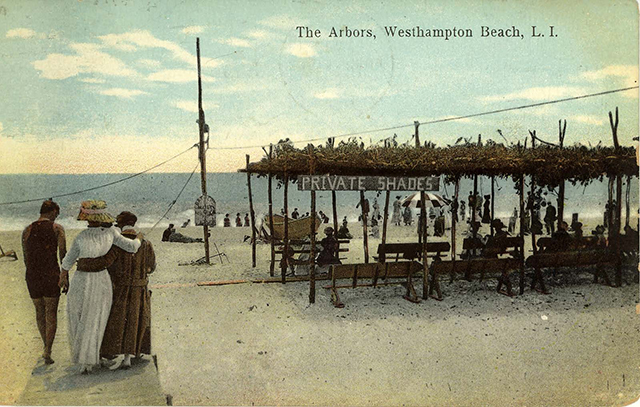
Courtesy of the Westhampton Beach Historical Society
During the 19th century, visitors seeking a respite from the summer heat and congestion of New York City began seasonally travelling to the greater Westhampton area. With the expansion of the Long Island Railroad to the Hamptons by 1870, travel became easier and this effectively turned Westhampton from an East End fishing and farming community into a resort town with an ever-expanding summer population. Oak leaf arbors, the forerunners of beach umbrellas, and wooden benches were some of the many amenities provided to guests at Westhampton’s popular ocean beaches.



















